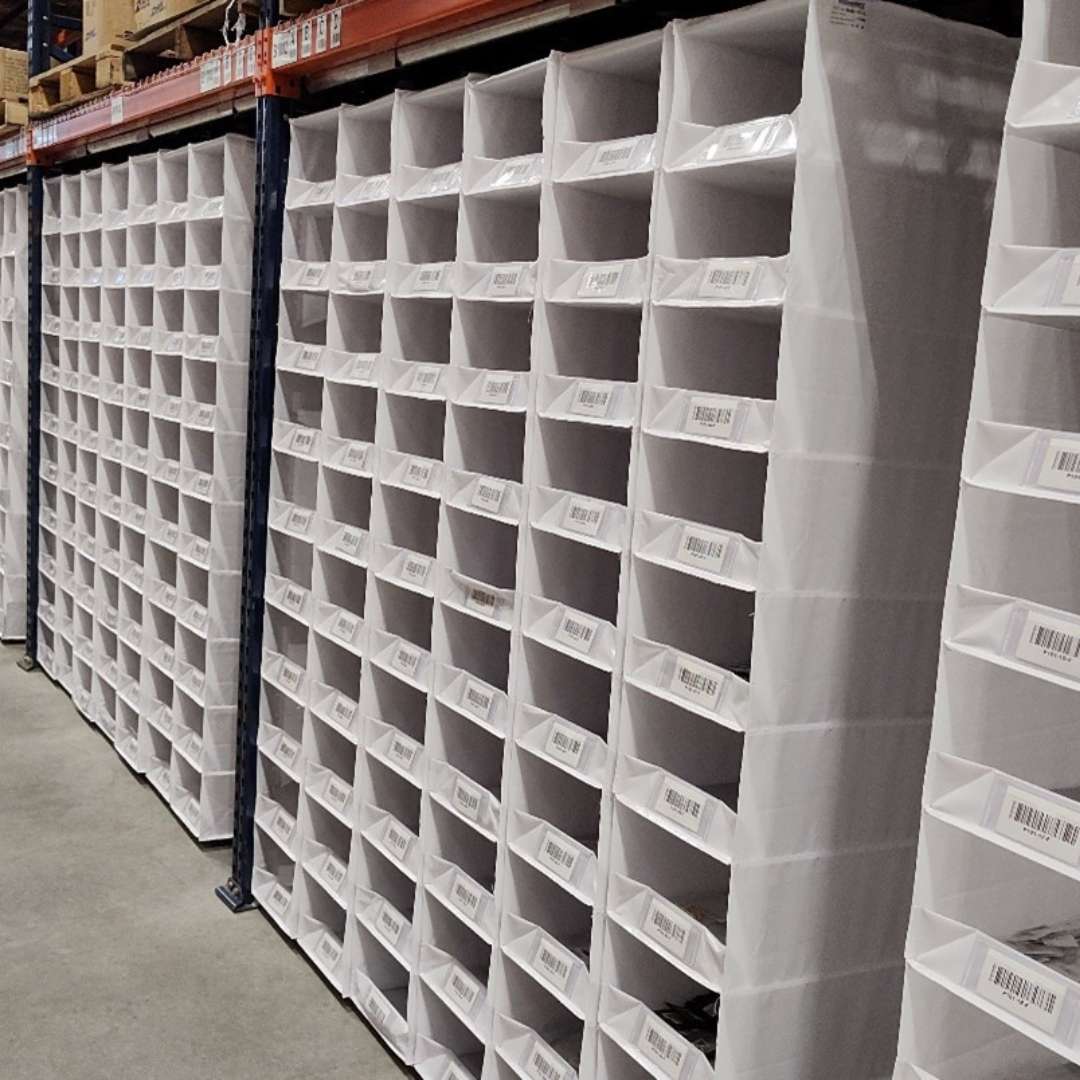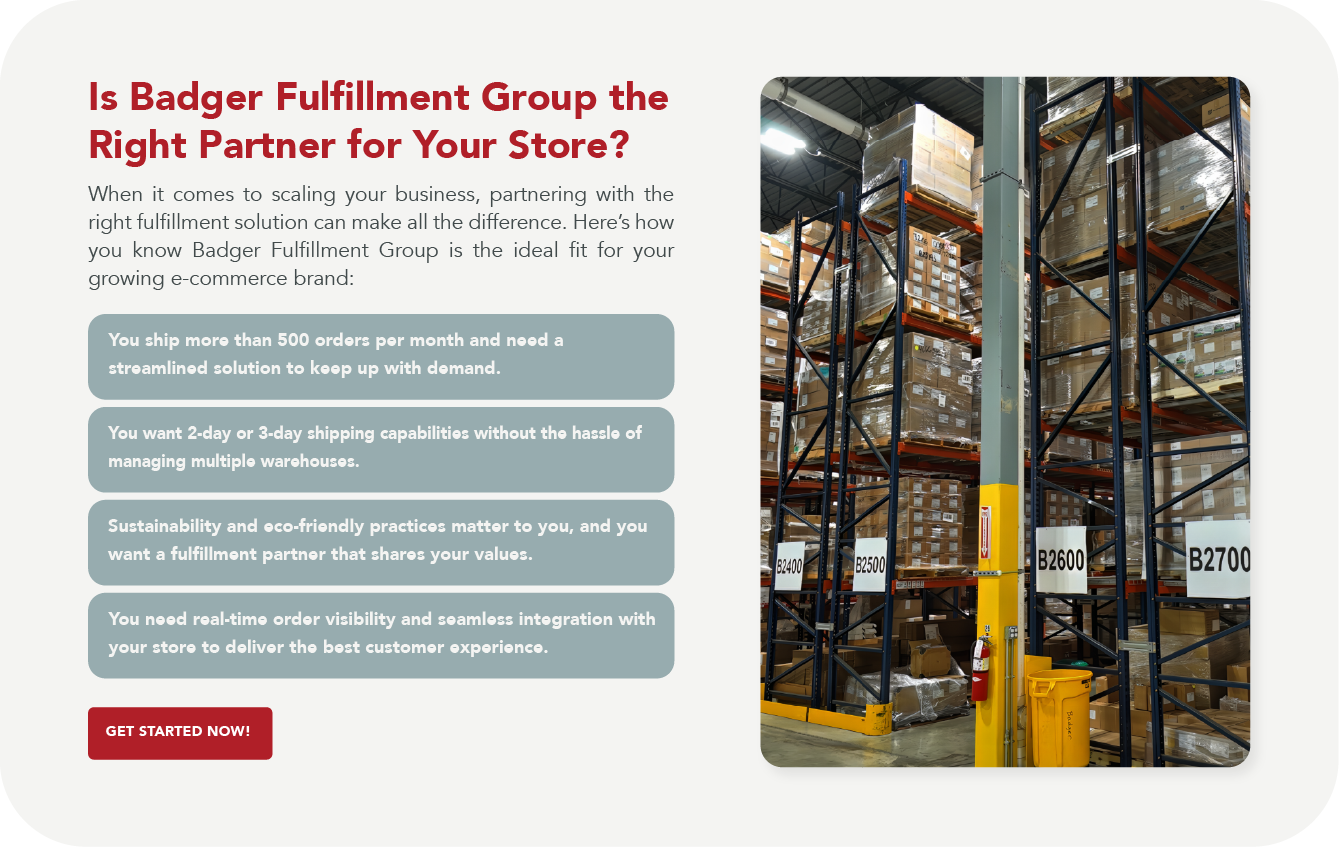In the world of logistics and supply chain management, one crucial decision can make all the difference: choosing the right warehouse space for your business needs. Whether you’re a growing e-commerce enterprise, a manufacturer with seasonal demand fluctuations, or a distributor looking to streamline operations, the warehouse you select plays a pivotal role in your success. Let’s delve into the significance of this choice and guide you through the key considerations to ensure that your warehousing solution aligns perfectly with your business objectives.
Taking into Account Value Added Services.
It’s vital to consider any value-added services your business may need. Services like kitting, assembly, or customization can significantly impact the space needed within your warehouse. These value-added processes often require designated workstations and storage areas to efficiently carry out tasks. For instance, kitting operations may require space for organizing and assembling product components into kits or bundles. Assembly tasks could involve workstations for assembling products from various parts, while customization services may necessitate areas for personalization or branding. By factoring in these additional service needs, you can ensure that your warehouse space is not only optimized for storage but also tailored to support the value-added processes crucial to your business operations.
Taking into Account Value Added Services.
When calculating your warehouse space needs, it’s imperative to factor in any regulatory requirements or industry-specific standards that may exert influence. Various industries and product categories are subject to specific regulations governing storage conditions, safety measures, and documentation practices. These regulations may dictate the need for specialized storage environments such as temperature-controlled areas for pharmaceuticals or supplements. Moreover, compliance with industry standards ensures that your operations align with best practices and maintain the highest levels of quality and safety.
Warehousing vs Fulfillment Services
Warehousing and fulfillment services are essential components of modern supply chain management, each serving distinct purposes within the logistics ecosystem. Warehousing primarily focuses on the storage and management of goods, providing secure, organized facilities to store inventory until it’s needed. These facilities act as a central hub for storing products in bulk, optimizing space utilization, and ensuring inventory availability. Warehouses are particularly valuable for businesses with varying inventory levels, seasonal fluctuations, or the need to stockpile products for distribution.
On the other hand, fulfillment services through a third party fulfillment company extend beyond storage and involve the complete order processing and delivery cycle. Fulfillment centers pick, pack, and ship products to end customers, offering a seamless solution for e-commerce businesses. This comprehensive approach ensures that orders are fulfilled accurately and efficiently, saving businesses time and resources. Fulfillment services are especially beneficial for companies seeking to outsource the entire logistics process, from inventory management to final delivery, allowing them to focus on core business functions and scale their operations without the burden of logistics complexities. In summary, while warehousing is a component of fulfillment services, the latter encompasses a broader range of activities critical for efficient order fulfillment and customer satisfaction.
How to Tell if My Business Needs Warehousing & Fulfillment Services
Struggling to gauge your business’s readiness for warehouse services? Explore this list of common challenges frequently voiced by our clients. When your inventory volume exceeds the capacity of your current storage space.
- When you experience seasonal fluctuations in product demand, requiring additional storage and support especially during peak periods.
- When you want to centralize and streamline inventory management for cost-effective operations.
- When you’re expanding your business and need a dedicated space to store products.
- When you’re planning to offer a wider range of products and require more storage capacity.
- When you need to implement efficient order fulfillment processes to meet customer expectations.
- When you want to optimize inventory control and minimize stockouts or overstock situations.
- When you seek to reduce shipping costs and transit times by storing products closer to customers.
- When you need a secure and climate-controlled environment for specialized or high-value goods.
With these insights and a keen eye on your business needs, you’re better equipped to make the right decision regarding warehouse services. Whether you’re grappling with inventory overflow, seasonal fluctuations, or the desire for a streamlined supply chain, remember that you’re not alone in facing these challenges. Our team is here to help you find the ideal warehousing solutions tailored to your specific requirements. Don’t hesitate to reach out and discover how we can assist in optimizing your operations, ensuring your business is ready to thrive in today’s dynamic marketplace.
Factors to Consider When Selecting Warehouse Space.
When it comes to selecting warehouse space, there are several critical factors that demand careful consideration. From scalability and flexibility to security and eco-friendliness, each aspect contributes to the overall efficiency and success of your logistics operations. Additionally, having open lines of communication with on-site representatives can prove invaluable in swiftly addressing any challenges that may arise.
Scalability and Flexibility
Scalability and flexibility stand as foundational pillars when it comes to selecting the right warehouse space. Scalability is not merely a buzzword; it’s a strategic necessity for businesses aiming to accommodate growth. As your operations expand and evolve, your warehousing needs will naturally follow suit. A warehouse that can readily scale with your growth ensures that you won’t outgrow your space prematurely, saving you the hassle of relocating or leasing additional facilities.
Moreover, flexibility in space allocation within the warehouse is equally vital. It grants you the agility to adapt to ever-changing business demands. Whether it’s adjusting storage configurations, reorganizing inventory, or accommodating seasonal fluctuations, having a space that can be easily tailored to your needs allows for efficient resource utilization. The ability to reconfigure the spacing within the warehouse ensures that your operations remain nimble, cost-effective, and capable of meeting both expected and unexpected challenges head-on. In the world of warehousing, adaptability is the key to sustained success.
Security
Security is an indispensable aspect of any warehouse space, with the paramount objective of safeguarding your valuable inventory. In an environment where valuable goods are stored, a secure warehouse serves as your first line of defense against potential losses due to theft, damage, or unauthorized access. The importance of security cannot be overstated, as it not only protects your assets but also upholds your reputation for reliability and trustworthiness in the eyes of your customers.
To achieve this level of protection, modern warehouses employ a range of security measures. These may include comprehensive surveillance systems that monitor every nook and cranny of the facility, ensuring that any suspicious activity is promptly detected. Access controls, such as key card or biometric entry systems, restrict entry to authorized personnel only, minimizing the risk of unauthorized access. Additionally, alarm systems are deployed to provide real-time alerts in the event of any security breaches, allowing for rapid response and intervention. In an era where data and assets are more valuable than ever, investing in a 3PL that priorities security measures is an imperative step towards preserving the integrity of your products.
Warehouse Size
Determining if the size of the warehouse is a perfect fit for your business is a pivotal step in ensuring smooth logistics operations. Whether you choose to take an in-person tour or a digital one, visually assessing the facility provides invaluable insights. Walking through the warehouse allows you to gauge the available space, layout, and storage capacity firsthand. It’s an opportunity to confirm that the dimensions align with your inventory volume and operational needs. A digital tour, while not as immersive, can still offer valuable information, providing a virtual glimpse of the space’s layout and configuration. Top of Form
The size of the warehouse also ties closely to scalability. As your business grows, you’ll want a 3PL partner with the capacity to expand alongside you. A warehouse that’s too small may quickly become a bottleneck, hindering your ability to meet customer demands and scale your operations. Conversely, a warehouse that’s excessively large may lead to unnecessary expenses. Therefore, when assessing potential 3PL partners, consider not only your current inventory requirements but also your growth projections to ensure that the warehouse size aligns with your long-term logistics strategy. In this way, you can establish a mutually beneficial partnership that accommodates your evolving needs while maintaining cost-efficiency.
Determining How Much Warehouse Space You Need
Determining the appropriate amount of warehouse space for your business’s storage needs is a crucial decision in the realm of logistics and inventory management. This process involves a comprehensive assessment of several key factors, including your existing inventory quantities, future growth projections, seasonal demand fluctuations, product variations, any required value-added services, adherence to industry-specific regulations, and the layout design aimed at enhancing operational efficiency while maintaining accessibility and order accuracy.
Determine Your Current Inventory Volume
Determining your current inventory volume and growth projections is a fundamental step in gauging how much warehouse space your business truly requires. It begins with a thorough examination of your existing inventory levels, including the number of SKU (Stock Keeping Unit) variants you hold and the quantities of each item. This inventory snapshot serves as a baseline to understand your immediate warehousing needs.
Equally critical is forecasting your business’s growth trajectory. By analyzing historical sales data, market trends, and your company’s strategic objectives, you can project future inventory requirements. This forward-looking approach enables you to anticipate increases in demand, product expansions, or seasonal fluctuations when preparing for holidays and other crucial times.
Estimating future warehousing needs is not just about accommodating larger quantities of stock; it also entails considering any changes in your products. For instance, if you plan to introduce new, bulkier items or if your inventory mix shifts towards larger, high-demand products, this will affect the spatial requirements of your warehouse.
Assess Seasonality Fluctuations
Assessing the seasonality and fluctuations in your business is a strategic imperative when determining warehouse space requirements. Every business experiences ebbs and flows in demand, whether driven by holidays, changing consumer preferences, or industry-specific trends. Understanding these fluctuations is akin to tuning into the heartbeat of your operation. For instance, if you’re in the retail sector, the holiday season may see a significant surge in sales, necessitating additional storage space to accommodate the influx of inventory. Conversely, during quieter periods, you might require less space, and paying for unused square footage can become an unnecessary expense. By analyzing these patterns, you can proactively adjust your warehousing strategy, including inventory levels and space allocation, to optimize operational efficiency and cost-effectiveness throughout the year.
Dimensions of your Products
When determining your warehouse space needs, it’s essential to consider the variety and dimensions of your products. Not all items are created equal, and different products often demand specific storage solutions tailored to their unique characteristics. For instance, fragile or high-value items may require secure, climate-controlled spaces to ensure their preservation and protection. Bulky or oversized products may necessitate specialized racking or shelving systems designed to accommodate their dimensions efficiently. If you offer smaller sized items such as jewelry, having a third party fulfillment company that offers smaller storage options per SKU as seen in the image below can be an incredible cost advantage. Additionally, products with varying shelf lives, such as perishable goods or supplements and vitamins, may call for dedicated zones within the warehouse to manage expiration dates effectively.

In the complex world of logistics and inventory management, determining how much warehouse space you need is a pivotal decision. It’s not just about allocating square footage; it’s about strategically aligning your storage capacity with your current and future business requirements. By carefully considering factors such as inventory volume, growth projections, seasonal fluctuations, product characteristics, and industry-specific standards, you can ensure that your warehouse space is not just an area to store products, but an essential component of your business strategy. This calculated approach empowers you to efficiently meet customer demands, minimize overhead costs, and adapt to the ever-changing landscape of commerce, ultimately positioning your business for success in a dynamic and competitive marketplace.



